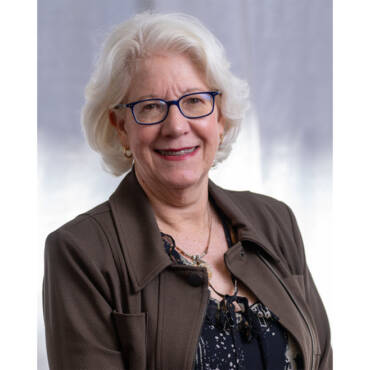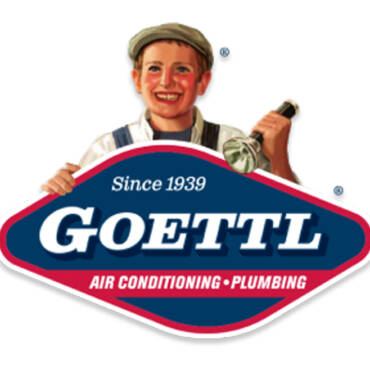✕
The HVAC industry is currently in the midst of one of its most consequential shifts in history — an accelerated transition away from fossil fuels toward the adoption of more efficient, more environmentally friendly, all-electric solutions.
At the heart of this push is the electric motor, which by some estimates account for a staggering 30% of all electricity consumed, so by improving efficiency over older models, real change can be achieved.
For the team at Regal Rexnord, rising to meet the challenges associated with the electrification “mega-trend” is at the core of its operation, but there is also a lot of emphasis being placed on making sure whatever they produce is going to be of value to the consumer and help them meet their end-goals of reduced emissions.
“As we go deep with our customers, our innovations tend to be very focused on solvable problems,” Jerry Morton, EVP & president, Industrial Powertrain Solutions at Regal Rexnord, said. “We call that an ‘innovation with a purpose’ mindset. We’re there to solve something – we’re not going to design something and then find a market.”

IN-DEPTH LOOK: During a break-out session held during Regal Rexnord’s media day, a panel discusses issues the HVAC industry is currently facing. (Courtesy of Regal Rexnord)
New Demands Require New Innovations
As the HVAC landscape continues to evolve — driven by new government standards, incentives pushing more efficient products, or the growing green mindset of the consumer — more high-tech options are beginning to phase out some of the industry’s tried-and-true workhorses.
Unlike traditional permanent split capacitor (PSC) motors, electronically commutated motors (ECMs) can be used to fine-tune systems, while also providing more efficiency and a longer lifespan, and are quickly becoming the new industry standard.
“From a product development standpoint, what we’re really trying to drive into the market is our ECM solutions,” Jared Zumstein, Senior Manager – Product Management HVAC, said. “Electrically commutated products appear on the back of a motor to deliver heightened performance, better efficiency, and more controllability of the airflow within a space.”
While PSC motors, which are now in the “good” section of RRX’s good/better/best offerings, still have their place in HVAC, Zumstein said they will eventually be retired from the Regal Rexnord line and replaced by ECMs. As features advance on ECMs, so do their diagnostic and programable capabilities.
Regal Rexnord’s line of ECMs includes the EON family, part of the wide range of 42 and 48 frame ECMs available by Genteq, and have applications in residential, light commercial, and commercial spaces. There’s also the Endura Pro Motors, which bridges the gap between PSC and ECM by striking a balance between the simplicity and cost-effectiveness of PSC motors and the efficiency and versatility of ECMs.
Aside from efficiency advantages, ECMs also have the capability of providing consistent airflow, even through more obstructive interfaces like Merv-13s, or a clogged filter that someone may have neglected.
“That motor is able to keep up and continue to push air through a filter, regardless, to some extent, of the cleanliness of the filter,” Zumstein said. “You have the ability to drive consistent airflow with high efficiency through a very restrictive medium.”
As for a general go-to HVAC solution, Regal Rexnord designed the Evergreen motor.
“It’s a singular motor that’s been auto-configured to meet a broad variety of applications,” Brooke Lang, EVP and president, Power Efficiency Solutions, said.
Historically, a contractor or distributor may have needed 50 different motors based on different torque, speeds, horsepower, etc., on hand to meet certain applications. But now, those are all replaced by one unit, the Evergreen, which not only saves a significant amount of space, but also hassle.
“They don’t have to roll the truck multiple times, they don’t have to go to the store and buy a motor with a slightly different speed set,” Lang said. “Now they can just buy one, and this is a universal application.”
And for the end customer, this upgrade comes with significant energy savings, estimated at about $300 a year.
As more advanced ECMs start to overtake older PSC technology, Zumstein added there’s also a lot of opportunity for backward compatibility that will help to greatly enhance the end-user’s experience.
With a PSC motor that’s just run across the line at a 115 or 230-volt coming to the motor, there’s no separate control system to be able to operate an ECM. However, that’s no longer a problem.
“With our new Evergreen OM and other products, we’re going to be able to help drive either the distribution market and/or the OEM market from those PSC solutions into higher-efficiency ECM solutions without having them being burdened with the cost of controls and some of the other engineering expenses associated with that,” Zumstein said.
While HVAC contractors are always looking to provide the most value to their customers, they don’t want long lead times and the myriad of issues associated with those obstacles. RRX has also been working hard to meet those criteria, and they’ve found that one of the best solutions is to bring manufacturing home.
Connecting All the Dots: Near-Shoring and Increased Reliability
Regulators want more efficient, environmentally friendly products. Contractors want to work with products that offer high value to customers and are easy to sell. Neither of them wants to wait forever for them to arrive or for them to be too expensive.
This has presented a pretty small target to hit, but Regal Rexnord has made significant moves to reverse decades of increased reliance on foreign countries and fragile supply lines through near-shoring.
Vijay Chahar, director of sales, said customers are shifting away from a purely cost-oriented mindset because their concerns about the supply chain have grown so strong that they are now placing more value on viable commitments and products that are made closer to home.
“That’s the biggest change we have seen in the last six months to a year, particularly when both presidential candidates are talking about potentially more import duties,” Chahar added.
Diego Marafon, Sr. Director Product Management, Power Efficiency Solutions, said most of what they are currently selling to the North American market is either completely made, or finally assembled, in North America.
A good real-world example is RRX’s COPRA motors, which are assembled in Lincoln, Missouri.
Marafon said they call the COPRA “the marvel of data center cooling,” because of its ability to combat the massive amounts of heat generated by a data center’s computing processes.
“As a consequence, that requires better cooling solutions, more efficient cooling solutions,” Marafon said, adding that the available space inside data centers have presented another challenge. “So (COPRA) combines the two — it’s a hyper-efficient blower motor in a very compact form.”
The COPRA motor offers the shortest axial length available on the market, but it does not restrict airflow even though it is minimizing its footprint. It also features variable speed controllability with maximum possible energy savings, including under a partial load, and low operating sound to ensure a quiet workspace.
With the CHIPS Act, enacted in 2022 to boost domestic research and manufacturing of advanced technology, deploying billions of dollars to rebuild chip infrastructure in North America, the demand for state-of-the-art IAQ and cooling solutions is also increasing.
In August, Marafon said he visited two enormous job sites in Texas where they are preparing chip fabrication facilities. With the costs projected to be in the billions for both projects, they needed high-end IAQ solutions, and they also wanted them quickly.
“Before, these units were being shipped from overseas,” Marafon said, but now, they are coming straight from the heartland.
Chahar also said near-shoring puts them in a much better position to fulfill domestic content requirements found in the CHIPS Act.
“In certain industries, when (the government) is giving away credits or incentives, there is talk about making sure money does not go to China,” Chahar said. “And we at Regal Rexnord are ideally placed to take full advantage of that situation.”
“We are one of the very few companies that not only have the capabilities to produce in the United States, but also scale up if needed,” Chahar added.
For the contractor, US production is seen as an enormous bonus that eliminates a lot of uncertainties that come along with these high-dollar, high-stress projects.
“Let’s face it — lead time is a huge factor,” Sarah Lavis, segment leader – HVAC, said. “When people are looking for a product or a new supplier, are they going to choose the one with four weeks lead time or the one with 12?”
Domestic production also eliminates some of the restrictions that come with overseas shipping, like customs.
“The localization helps us in multiple ways,” Lavis added.
Mark Thabit, director of digital marketing, added that the shipping industry also hasn’t escaped inflationary pressures, as is evident by the soaring cost of containers, so eliminating some of those factors also passes savings on to the customer.
The Next Set of Challenges
As the HVAC industry creeps toward 2027 and 2029, more mandates from the DOE are going to hit electric motors.
“So we’ll continue to see phase-outs of our (good product category) and mixing that into our (better and best product category),” Zumstein said. “The same thing is happening on the end-application side too with what the industry is calling their M1 regulation and M2 regulation.”
M1 went into effect this year, Zumstein noted, and M2 is coming in 2029 with the result leveraging high-efficiency motors, compressors, and blowers, and design techniques to improve AFUE and SEER levels to even higher than what is being mandated currently.
With an estimated half of all buildings being constructed before 1980, that means there are still a lot of energy-inefficient motors still humming across the country. Here, the “if it’s not broke, don’t fix it” attitude could be creating unnecessarily high energy bills for companies, but could lead to some increased sales for savvy contractors if they can communicate the benefits of swapping out those relics of the past for one of these next-gen motors.
Whether you require installation, repair, or maintenance, our technicians will assist you with top-quality service at any time of the day or night. Take comfort in knowing your indoor air quality is the best it can be with MOE heating & cooling services Ontario's solution for heating, air conditioning, and ventilation that’s cooler than the rest.
Contact us to schedule a visit. Our qualified team of technicians, are always ready to help you and guide you for heating and cooling issues. Weather you want to replace an old furnace or install a brand new air conditioner, we are here to help you. Our main office is at Kitchener but we can service most of Ontario's cities
Source link



Add Comment